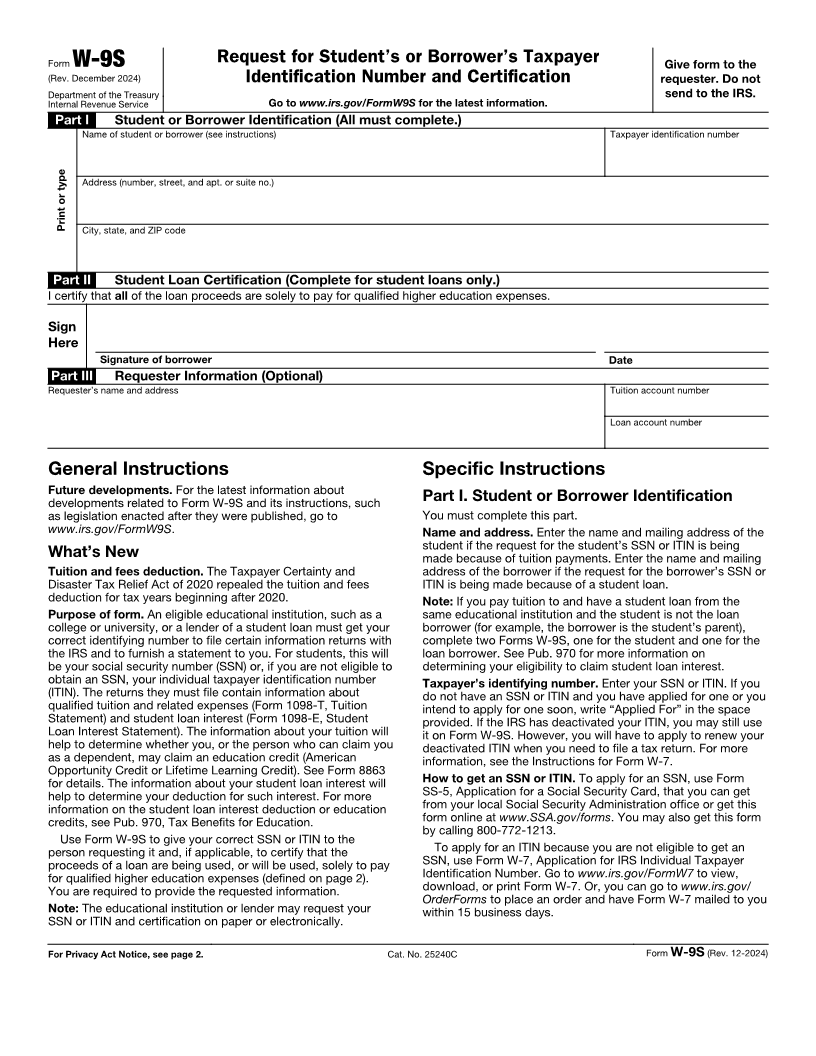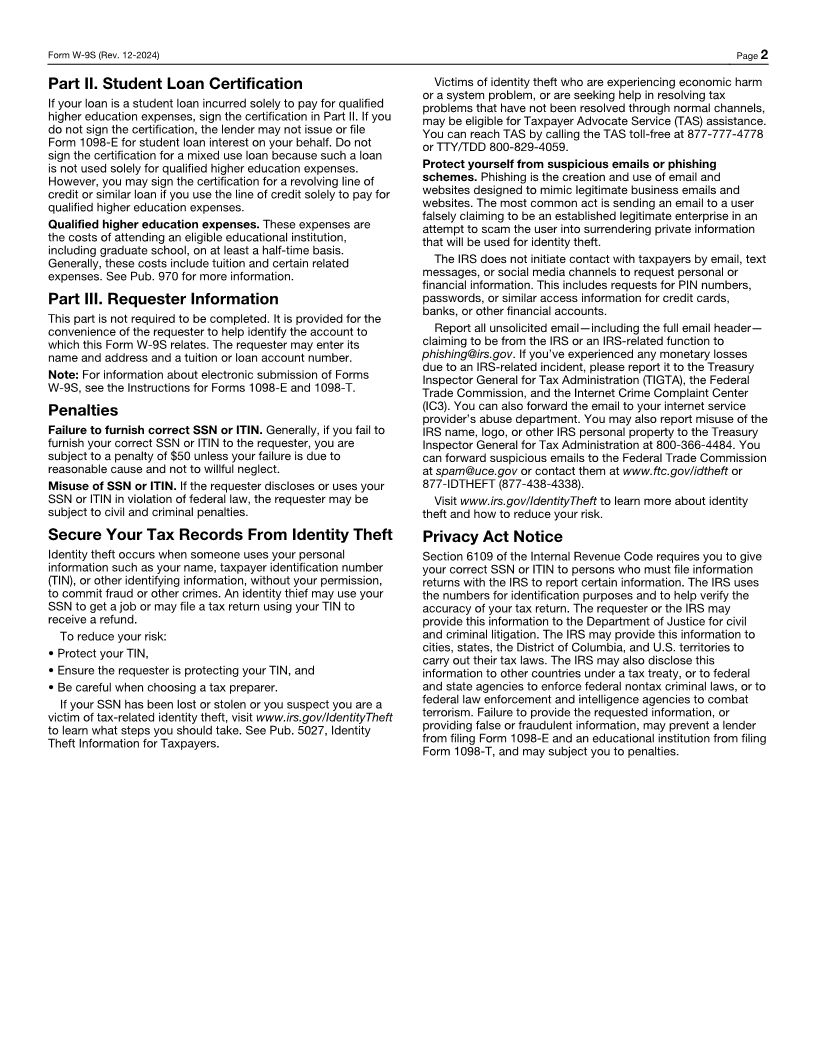
Enlarge image
Form W-9S Request for Student’s or Borrower’s Taxpayer Give form to the
(Rev. December 2024) Identification Number and Certification requester. Do not
Department of the Treasury send to the IRS.
Internal Revenue Service Go to www.irs.gov/FormW9S for the latest information.
Part I Student or Borrower Identification (All must complete.)
Name of student or borrower (see instructions) Taxpayer identification number
Address (number, street, and apt. or suite no.)
Print or type City, state, and ZIP code
Part II Student Loan Certification (Complete for student loans only.)
I certify that all of the loan proceeds are solely to pay for qualified higher education expenses.
Sign
Here
Signature of borrower Date
Part III Requester Information (Optional)
Requester’s name and address Tuition account number
Loan account number
General Instructions Specific Instructions
Future developments. For the latest information about
developments related to Form W-9S and its instructions, such Part I. Student or Borrower Identification
as legislation enacted after they were published, go to You must complete this part.
www.irs.gov/FormW9S. Name and address. Enter the name and mailing address of the
student if the request for the student’s SSN or ITIN is being
What’s New made because of tuition payments. Enter the name and mailing
Tuition and fees deduction. The Taxpayer Certainty and address of the borrower if the request for the borrower’s SSN or
Disaster Tax Relief Act of 2020 repealed the tuition and fees ITIN is being made because of a student loan.
deduction for tax years beginning after 2020. Note: If you pay tuition to and have a student loan from the
Purpose of form. An eligible educational institution, such as a same educational institution and the student is not the loan
college or university, or a lender of a student loan must get your borrower (for example, the borrower is the student’s parent),
correct identifying number to file certain information returns with complete two Forms W-9S, one for the student and one for the
the IRS and to furnish a statement to you. For students, this will loan borrower. See Pub. 970 for more information on
be your social security number (SSN) or, if you are not eligible to determining your eligibility to claim student loan interest.
obtain an SSN, your individual taxpayer identification number Taxpayer’s identifying number. Enter your SSN or ITIN. If you
(ITIN). The returns they must file contain information about do not have an SSN or ITIN and you have applied for one or you
qualified tuition and related expenses (Form 1098-T, Tuition intend to apply for one soon, write “Applied For” in the space
Statement) and student loan interest (Form 1098-E, Student provided. If the IRS has deactivated your ITIN, you may still use
Loan Interest Statement). The information about your tuition will it on Form W-9S. However, you will have to apply to renew your
help to determine whether you, or the person who can claim you deactivated ITIN when you need to file a tax return. For more
as a dependent, may claim an education credit (American information, see the Instructions for Form W-7.
Opportunity Credit or Lifetime Learning Credit). See Form 8863
for details. The information about your student loan interest will How to get an SSN or ITIN. To apply for an SSN, use Form
help to determine your deduction for such interest. For more SS-5, Application for a Social Security Card, that you can get
information on the student loan interest deduction or education from your local Social Security Administration office or get this
credits, see Pub. 970, Tax Benefits for Education. form online atwww.SSA.gov/forms. You may also get this form
by calling 800-772-1213.
Use Form W-9S to give your correct SSN or ITIN to the
person requesting it and, if applicable, to certify that the To apply for an ITIN because you are not eligible to get an
proceeds of a loan are being used, or will be used, solely to pay SSN, use Form W-7, Application for IRS Individual Taxpayer
for qualified higher education expenses (defined on page 2). Identification Number. Go to www.irs.gov/FormW7 to view,
You are required to provide the requested information. download, or print Form W-7. Or, you can go to www.irs.gov/
OrderForms to place an order and have Form W-7 mailed to you
Note: The educational institution or lender may request your within 15 business days.
SSN or ITIN and certification on paper or electronically.
For Privacy Act Notice, see page 2. Cat. No. 25240C Form W-9S (Rev. 12-2024)
